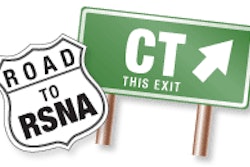Thirty-three consecutive subjects with suspected acute appendicitis underwent dual-energy MDCT (Somatom Definition Flash, Siemens Healthcare) and received oral and IV contrast material, Dr. Shaun Patel told AuntMinnie.com.
Data were examined on a workstation that generated virtual noncontrast images. These were initially read by a third-year radiology resident and a highly experienced abdominal radiologist, with appendiceal visualization graded on a four-point scale, with four being the best.
The visualization scores averaged for the readers were 3.03 ± 1.17 for the virtual noncontrast data and 3.05 ± 1.17 for the contrast-enhanced images (p = 0.834), the group reported. Four patients whose images were read by the resident showed lower visualization versus none for the experienced radiologist.
"For an inexperienced reader, up to 17% of patients will demonstrate lower appendiceal CT visualization scores without contrast when compared with a contrast-enhanced CT examination," Patel explained. "We concluded that in an academic medical center where residents are interpreting CT examinations for appendicitis, the use of oral and IV contrast will improve appendiceal visualization."



















